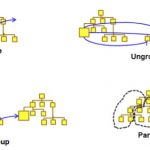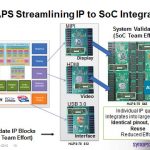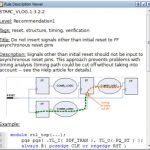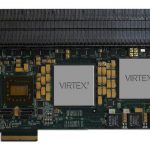We have talked for years about RTL signoff, the idea that a design could be finalized at the RTL level and then most of the signoff would take place there. Then the design would be passed to a physical implementation team who would not expect to run into any problems (such as routing congestion, missing the power budget or similar problems).… Read More
Tag: rtl
Beyond one FPGA comfort zone
Unless you are a small company with one design team, the chance you have standardized on one FPGA vendor for all your needs, forever and ever, is unlikely. No doubt you probably have a favorite, because of the specific class of part you use most often or the tool you are most familiar with, but I’d bet you use more than one FPGA vendor routinely.… Read More
Best Practice for RTL Power Design for Mobile
Mobile devices are taking over the world. If you want lots of graphs and data then look at Mary Meeker’s presentation that I blogged about earlier this week. The graph on the right is just one datapoint, showing that mobile access to the internet is probably up to about 15% now from a standing start 5 years ago.
Of course, one obvious… Read More
RTL Restructuring
Hierarchical IC design has been around since the dawn of electronics, and every SoC design today will use hierarchy for both the physical and logical descriptions. During the physical implementation of an SoC you will likely run into EDA tool limits that require a re-structure of the hierarchy. This re-partitioning will cause… Read More
Help, my IP has fallen and can’t get up
We’ve been talking about the different technologies for FPGA-based SoC prototyping a lot here in SemiWiki. On the surface, the recent stories all start off pretty much the same: big box, Xilinx Virtex-7, wanna go fast and see more of what’s going on in the design. This is not another one of those stories. I recently sat down with Mick… Read More
You may want to check that known-good RTL
In his blog Coding Horror, Jeff Atwood wrote: “Software developers tend to be software addicts who think their job is to write code. But it’s not. Their job is to solve problems.” Whether the tool is HTML, C, or RTL, the reality is we are now borrowing or buying more software IP than ever, and integrating it into more complex designs,… Read More
Oasys Has a New CEO
Scott Seaton is the new CEO of Oasys Design Systems. Paul van Besouw, the CEO since the company’s founding, becomes the CTO. I met Scott last year when I was doing some consulting work for Carbon Design where he was VP of sales (the new VP sales at Carbon is Hal Conklin, by the way).
I talked to Scott about why he had joined Oasys. … Read More
Embedding 100K probes in FPGA-based prototypes
As RTL designs in FPGA-based ASIC prototypes get bigger and bigger, the visibility into what is happening inside the IP is dropping at a frightening rate. Where designers once had several hundred observation probes per million gates, those same several hundred probes – or fewer if deeper signal captures are needed – are now spread… Read More
12m FPGA prototyping sans partitioning
FPGA-based prototyping brings SoC designers the possibility of a high-fidelity model running at near real-world speeds – at least until the RTL design gets too big, when partitioning creeps into the process and starts affecting the hoped-for results.
The average ASIC or ASSP today is on the order of 8 to 10M gates, and that includes… Read More
A Brief History of Atrenta and RTL Design
We’re plagued by acronyms in this business. Wikipedia defines RTL as follows: “In digital circuit design, register-transfer level (RTL) is a design abstraction which models a synchronous digital circuit in terms of the flow of digital signals (data) between hardware registers, and the logical operations performed on those… Read More











